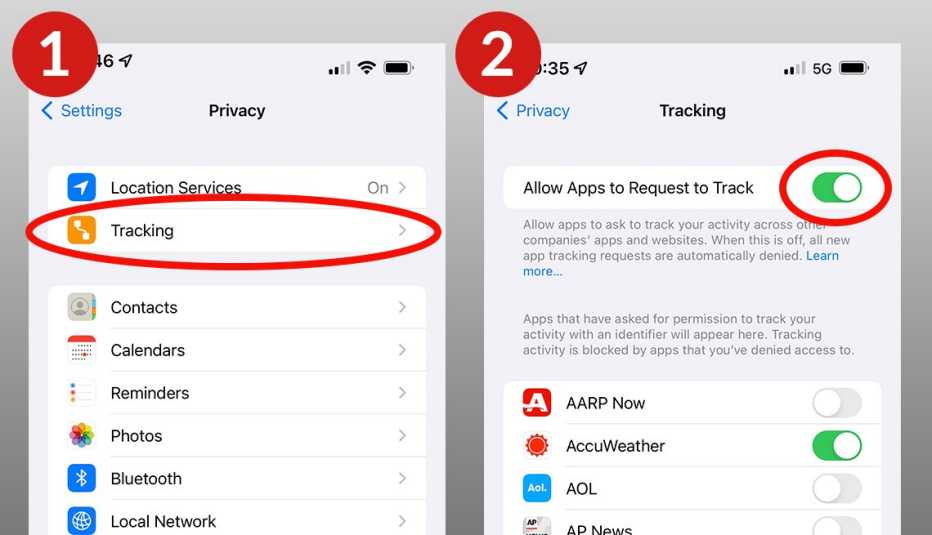AARP Hearing Center


The ads you see on your phone come across as invasive, and the idea that you’re being followed from site to site feels downright creepy.
Thirty-four percent of people 50 and above who responded to an AARP survey in 2021 cited privacy concerns as a top barrier to adopting new technology. And meeting the privacy wishes of consumers may run counter to the interests of certain tech companies, which see targeted advertising as their lifeblood.
It’s why privacy advocates have generally applauded Apple’s move last year to give folks a say in the way companies track their activity and share data online. And the move most notably disrupted Facebook parent Meta, which told analysts that the measures will knock down revenues by about $10 billion in 2022.
Now both Apple and Google have plans
App Tracking Transparency, introduced with the iOS 14.5 update, required Apple app developers to seek your permission to be tracked across apps and websites they don’t own or to share your information with so-called data brokers. Such opt-in app tracking requests come through a user prompt. Most people are denying that request.
But what about Android? Google, after all, has its own vested interest in the digital ad business.
"Let me be clear: When Google says, 'Let these companies make money on ads,' Google is the company making money on ads. It's not close."
The Alphabet-owned tech giant this month announced a plan to curtail tracking on Android devices, at least sort of. While not mentioning Apple by name, it hinted that it is “bluntly” taking a different path. That approach is through an initiative called Privacy Sandbox on Android, though details remain sketchy, and Google acknowledges that what it is devising may take at least a couple of years before it is fully put in place.



































































More on Home and Family
How to Clear the Caches of 4 Popular Web Browsers
Computers, smartphones slow when storage space is crampedGovernment Use of Facial Recognition Under Scrutiny
IRS decides to allow other ID verification methods after privacy advocates raise alarms
How to Keep Your Internet Browsing Private
Incognito mode, other tips to help you cover your trail